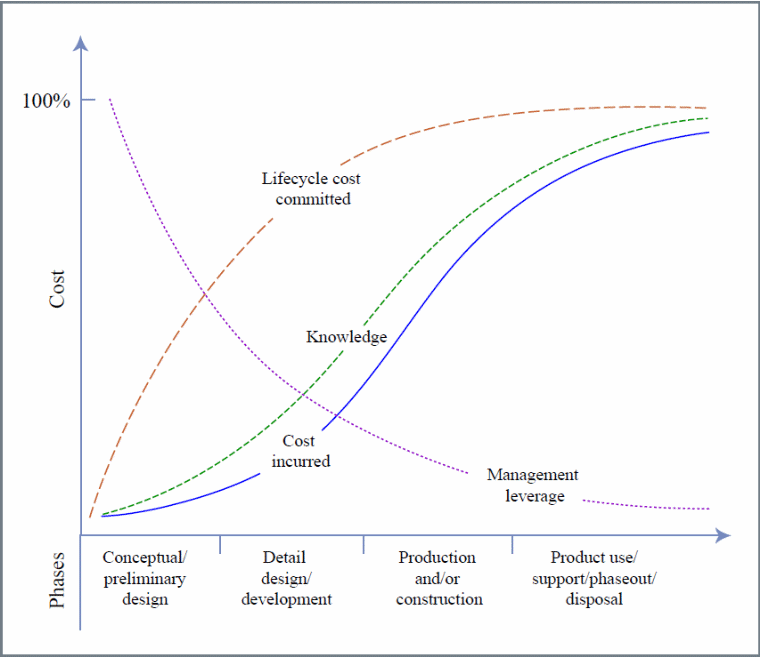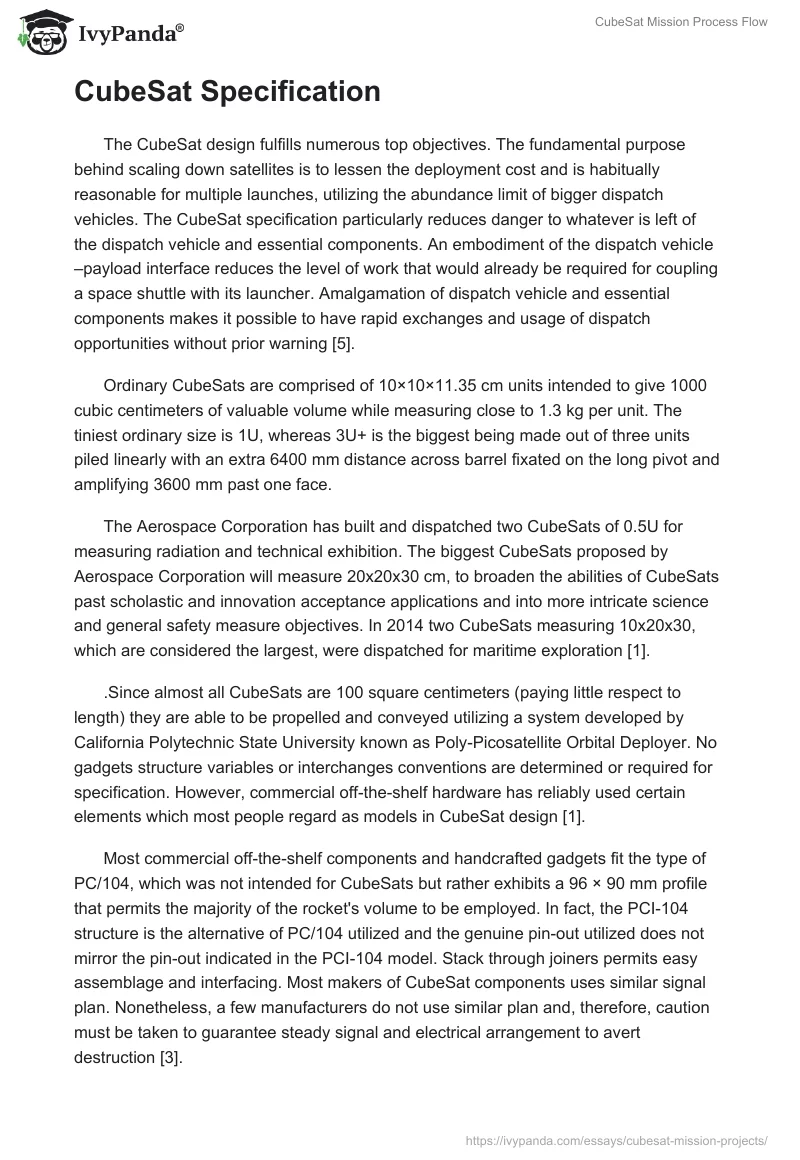Introduction
A CubeSat, a sort of miniaturized satellite, is a low-priced, institutionalized satellite with its inception in the CubeSat Project set up in the late 1990s by California Polytechnic State University and Stanford University. The CubeSat Project was set up to empower the college group to plan, construct, and dispatch satellites utilizing essentially off-the-rack components. Of late, the global community has embraced the CubeSat model as a way for conducting investigative, shadowing, and innovative exhibition missions at a considerably diminished cost.
The essential CubeSat unit is 1000 cubic centimeters with a mass of around 1.33 kg. This unit is normally alluded to as 1U. The essential CubeSat units can be fused to form a much bigger satellite. Generally, CubeSat can belong to different categories of miniature satellites, that is, minisatellites (weighing between 100 to 500kg), microsatellite (weighing between 10 to 100kg), nanosatellite (weighing between 1 to 10kg), picosatellite (weighing between 0.1 to 1kg), and femtosatellite (weighing between 001 to 01 kg).
The low cost and short life span have brought down the hindrance to entry for numerous organizations, and subsequently, most associations that make these miniaturized satellites are doing it for the first time. They do not, in essence, have the know-how or capability to oversee their projects with appropriate frameworks designing, and regardless of the possibility that they do, it is not viewed as the core activity given the fact that CubeSat missions are usually allocated a very small budget. The initial CubeSat units were meant for particular scientific explorations, especially in the low earth orbit. The universities and technical colleges accounted for large amount CubeSat takeoffs until recently, when the private organizations started embracing them for commercial, exhibition and experimental purposes.
CubeSat Specification
The CubeSat design fulfills numerous top objectives. The fundamental purpose behind scaling down satellites is to lessen the deployment cost and is habitually reasonable for multiple launches, utilizing the abundance limit of bigger dispatch vehicles. The CubeSat specification particularly reduces danger to whatever is left of the dispatch vehicle and essential components. An embodiment of the dispatch vehicle –payload interface reduces the level of work that would already be required for coupling a space shuttle with its launcher. Amalgamation of dispatch vehicle and essential components makes it possible to have rapid exchanges and usage of dispatch opportunities without prior warning.
Ordinary CubeSats are comprised of 10×10×11.35 cm units intended to give 1000 cubic centimeters of valuable volume while measuring close to 1.3 kg per unit. The tiniest ordinary size is 1U, whereas 3U+ is the biggest being made out of three units piled linearly with an extra 6400 mm distance across barrel fixated on the long pivot and amplifying 3600 mm past one face.
The Aerospace Corporation has built and dispatched two CubeSats of 0.5U for measuring radiation and technical exhibition. The biggest CubeSats proposed by Aerospace Corporation will measure 20x20x30 cm, to broaden the abilities of CubeSats past scholastic and innovation acceptance applications and into more intricate science and general safety measure objectives. In 2014 two CubeSats measuring 10x20x30, which are considered the largest, were dispatched for maritime exploration.
.Since almost all CubeSats are 100 square centimeters (paying little respect to length) they are able to be propelled and conveyed utilizing a system developed by California Polytechnic State University known as Poly-Picosatellite Orbital Deployer. No gadgets structure variables or interchanges conventions are determined or required for specification. However, commercial off-the-shelf hardware has reliably used certain elements which most people regard as models in CubeSat design.
Most commercial off-the-shelf components and handcrafted gadgets fit the type of PC/104, which was not intended for CubeSats but rather exhibits a 96 × 90 mm profile that permits the majority of the rocket’s volume to be employed. In fact, the PCI-104 structure is the alternative of PC/104 utilized and the genuine pin-out utilized does not mirror the pin-out indicated in the PCI-104 model. Stack through joiners permits easy assemblage and interfacing. Most makers of CubeSat components uses similar signal plan. Nonetheless, a few manufacturers do not use similar plan and, therefore, caution must be taken to guarantee steady signal and electrical arrangement to avert destruction.
Caution must also be taken in electrical selection to make sure that the gadgets can endure the present radiation. CubeSats intended for low earth exploration in which barometrical reentry would happen in a few days, radiation can to a great extent be overlooked and standard grade hardware might be utilized. Standard hardware can survive low earth radiation since the possibility of an occasional upset is low.
Spaceships in a low earth circle lasting many days are in danger and must use components that are made and tried in the irradiated surrounding. Missions past low earth circle or which would stay in low earth circle for long must utilize radiation-reinforced components. Additional deliberations are made for missions in a high vacuum because of the impacts of diversion, outgassing, and metallic fractions, which may bring about operational disappointment.
CubeSat mission project
Fundamentally, CubeSat mission project comprises of space system and the ground system. The space system is comprised of a solitary or additional CubeSats with their circles and subsystems. On the other hand, the ground system comprises of the project operations and terrestrial stations. The project operation center incorporates the software, records, processes, and operation’s workforce.
Mission Operations exercises incorporate mission preparation, command and regulation of the CubeSat, regulation of the terrestrial apparatus, recording of instrument readings and transmitting them via radio, and data processing and dispersion. The Ground Station comprises of the PCs, network, correspondence hardware, and related control framework facilitated in ground offices. Correspondence hardware incorporates the space-ground reception apparatuses. The mission’s operation is considered as a result of the entire project. The project could build up its own ground station or it could liaise with an existing ground station.
A CubeSat mission project requires a mission operation, ground positioning system satellites, and space-ground hand-off satellites. For instance, NASA is considering giving tracking and information transmission satellite system backing to CubeSat projects. On the off chance that the CubeSat system builds up its own particular hand-off satellites, then those satellites would be a component of the space system.
There are two ways to determining and attain a CubeSat orbit/circle. CubeSat mission examination can decide a favored circle and a scope of acceptable circles. On the off chance that the CubeSat is dispatched as an auxiliary payload, the CubeSat project should choose a dispatch opportunity that leaves the CubeSat within the acceptable circle. On the off chance that the CubeSat has circle regulation ability, it can then be moved from the acceptable circle to the favored circle. However, if the CubeSat is an essential payload, it can be propelled specifically to the favored circle.
CubeSats are often carried to a dispatch site, incorporated into a vehicle, propelled, and deployed. There are numerous choices for transporting, dispatching, and deploying a CubeSat. Companies offering such services include FedEx and Space Solutions. When a CubeSat is launched, it gets into an orbit. Cases are as essential or auxiliary payload on a dispatch rocket or on a freight flight to the space station. Deployment comprises of the activities, processes or methods that split up the CubeSat from the host and make it a free-flyer. However, a number of CubeSats are not deployed as free-flyers. The Poly-Pico Satellite Orbital Deployer (P-POD) is an example of a CubeSat Deployer.
In the event that the CubeSat system has its own vehicle, launch, and deployment, then they become part of the launch system at the same level as space and terrestrial systems. As of now, most CubeSat manufacturers get these services from external companies. The space system incorporates plans, interfaces, and activities that meet the prerequisites and limits of these service providers. For instance, a launch has a weight and vibration profile that restricts CubeSat design. For this reason, the prerequisites and constraints of services providers could be integrated into a transportation, launch and deployment model.
Process flow in regular space projects
For over four decades, space systems have been effectively outlined, constructed, and operated. Over this period, a technique has developed for deciding an underlying engineering for such frameworks, polishing it, and transitioning to point by point configuration of the space vehicles and different frameworks in the design. These techniques were based on a heritage of vast, well-funded, innovation-driven projects, for instance, the Apollo lunar mission project and an assortment of nationwide resource programs concentrated on cold war requirements.
However, with the end of cold war, contracting budgets and a shift in general requirements led to experiments in less expensive, quicker, superior projects intended to do more straightforward errands, much speedier with substantially less cash. The current techniques for deciding space framework structures are based on Space Mission Analysis and Design (SMAD) and NASA systems architectural guide.
The Space Mission Analysis and Design (SMAD) technique for managing space mission projects comprises of the accompanying steps: defining wide targets and constraints; gauging quantitative mission needs and necessities; defining elective mission ideas; defining elective mission designs; distinguishing framework drivers for each; describing mission ideas and designs ; distinguishing critical necessities; assessing mission utility; defining mission idea (gauge); characterizing framework prerequisites and; distributing necessities to system components.
Note the process begins with the identification of needs and necessities, which are pushed through an array of elective ideas and structures to describe a standard mission concept. From this standard, the hardware provisions are laid and apportioned to different system components. The emphasis is on narrowing the design decisions to create a manageable assortment of ideas that can be gauged.
The greater parts of the steps are subjective, involving the use of knowledge and proficiency to make a sound judgment. The decisions themselves have a tendency to be confined (for instance, the type of orbit or launch to use) without an official strategy for managing connections between the decisions. Lessons learned in the course of the project can be utilized to recap the process. In any case, this calls for carrying out a lot of work over and again and, therefore, is an unpleasant decision.
According to Wertz and Wiley, the objects and constraints are the key to the entire process. The procurement strategies for space systems, again and again, substitute nitty-gritty arithmetic necessities for expansive mission objectives. The Space Mission Analysis and Design (SMAD) technique is coherent and methodical, and savvy, experienced clients can utilize it to discover sensible answers for sensibly expressed mission needs. However, this procedure has requirements, for a solitary idea, as its objective, and there will constantly be an allurement to advance speedily to this objective. This may not be the best approach in the presence of questionable or ineffectively balanced necessities, new innovations with indefinite performances, unsteady financing, and hard-to-estimate costs.
NASA systems architectural guide presents another thought on continuing from necessities to prerequisites. It puts more accentuation on forthright work, and the need to consider the relationship amongst expense and efficiency through exchange studies and mission utility examination. In view of a defined need, as a set of mission necessities are created, a progression of rational design decisions are made to minimize the trade space down to an excellent standard design. Additional fine-tuning, through parametric studies, is carried out in every design variable based on the standard design. In situations where design solutions cannot be established, the prerequisites are confronted as required.

The ultimate success of a mission project depends on excellent up-front work. It has been expressed that 80 percent of the ultimate expenses of a system are decided before the initial 20 percent of the resources are essentially utilized. It is, therefore, not astonishing that those projects that under-fund front-end work, for instance, mission viability study and maiden design often incur higher costs later on. This is clearly shown in figure 1 above. Note that the above figure does not take into consideration unsuccessful programs, many of which are aborted due to scanty up-front work.
At this point in time, an average CubeSat mission project would require an overall material and hardware budget of approximately $100000 to $120000 per unit. The general structure would cost $50000 while the microcontroller would cost about $20000. The programming board, GPS payload and communication equipment would cost about $ 45000. The antenna, batteries, battery charger, voltage converter and solar cells would cost the rest. A basic IU CubeSat unit would cost around $60000. These low costs have made CubeSat a feasible choice for institutions and colleges, as well as private businesses. A number of CubeSats have intricate constituents or implements, for instance, Light Sail-I, which drives the cost to over a million dollars.

Process flow in CubeSat mission projects
Before a CubeSat can be endorsed for dispatch and coordinated into the Poly-Pico Satellite Orbital Deployer (P-POD), it should first breeze through certain trials as recorded in the CubeSat Design Specification. The dispatch supplier may likewise require extra tests not indicated in the documentation. The dispatch supplier could be a privately owned business or state institution.
For instance, as of late, NASA has been putting forth dispatch open doors for CubeSat engineers if the CubeSat and mission met certain requirements such that it would be of advantage to NASA. On the off chance that the dispatch environment is obscure, the GSFC-STD-7000 norms as characterized by NASA might be utilized. This standard, arranged by NASA’s Planetary Aerospace Center, gives necessities and rules to ecological confirmation platforms for payloads, subsystems, and parts and portrays techniques for executing those prerequisites.
The principal test required for each CubeSat is arbitrary vibration testing in which the satellite experiences dynamic stacking that mimics the unforgiving burdens experienced amid dispatch. Moreover, a heated vacuum bake out assessment should be done to guarantee appropriate outgassing of segments. The CubeSat should likewise pass a visual review by the dispatch supplier keeping in mind the end goal to guarantee that all specifications, for example, basic measurements are attained.
The CubeSat should then breeze through capability checks as characterized by the dispatch supplier. The Purpose of capability checks is meant to show that the component will operate within execution details under reenacted conditions more serious than those considered normal so that deficits in the configuration and technique for assembling can be revealed.
The capability tests can either assess “model” (any equipment of another design not proposed to be launched) or any flight equipment of another configuration. Eventually, the CubeSat must go through acknowledgment checks to guarantee that the satellite can be appropriately coordinated into the Poly-Pico Satellite Orbital Deployer (P-POD). In acknowledgment checks, every part, subsystem, and payload that carries out a machine-driven operation goes through a progression of motorized capacity checks so as to guarantee appropriate performance and that earlier checks have not corrupted the spaceship.
It is the obligation of the CubeSat developer to carry out all the required testing aside from the Acceptance testing preceding conveyance to the dispatch supplier. California Polytechnic State University can help CubeSat designers in establishing assessment services if needed or can perform the analysis themselves for the engineers and can charge the engineers if considered necessary.
CubeSat challenges and opportunities
CubeSats offer an exceptional challenge in their energy requirements and constrictions due to the fact that they have somewhat inadequate power sources. They have a limited space for solar assortments, small area and volume to provide lodgings for batteries and other power sources, while still accommodating experimental equipment and components that need energy to function. Since CubeSats operate on an austere energy budget, the suitable organization and circulation of power to all components is vital to the existence and functional capacities of the spacecraft.
Intricate, cohesive energy organization and circulation system are usually applied to make sure that there is an appropriate distribution of power to each component and to avert any damage to the electrical system. Configuration challenges also remain for nanosatellite as a result of increased failure rate brought about by conductor superficial charring and restricted impulse. Other challenges facing CubeSat mission projects include miniaturization of systems, limited budgets, lower data rates, regulatory issues and legislations (national space laws, NOAA, ITU/FCC), IPR matters in cooperation between parties, project life cycles, and other technical bottlenecks.
Nevertheless, CubeSats still provides cheaper and low barrier access to space. This means any entity or individual can now have access to space. An individual or institution can carry out space exploration for as little as $70000. However, launches are not that cheap since an individual part with launch fees, testing, and procedural costs, and campaign cost. It also offers an impeccable training platform for innovation and knowledge creation. CubeSat can be used for reasonably priced missions for exhibitions, experiments and for academic purpose. In addition, CubeSat mission projects as an initial roadmap to other advanced platforms. Last but not least, the performances of DSN antennas are increasingly beneficial for CubeSat mission projects since there is higher data return at remote distances.
References
T. Pham et al., Small Satellite Missions: Capabilities and challenges in space communication. Alabama. NASA. 2015, pp. 1-20.
M.R. Crook, NPS CubeSat Launcher Design and Model. Naval Postgraduate School, 2009.
M.J. Patterson. Electronic Power Subsystem Analysis, Research, and future plans. Honolulu. University of Hawaii, 2012.
A.M. Ross et al., “Multi-Attribute Trade space Exploration as a Front-End for Effective Space System Design. Journal of Spacecraft and Rockets, 2004.
N.P. Diller, Utilizing Multiple Attribute Trade space Exploration with Concurrent Design for Creating Aerospace Systems Requirements. Cambridge, MA: Massachusetts Institute of Technology, 2002.
L.J. Wiley & J.R. Wertz, Spacecraft Mission Analysis and Design. Microcosm Press, 2009.
M.G. Houts, “Nuclear Cryogenic Propulsion Stage,” in the proceedings of the Nuclear and Emerging Technologies for Space, 2013.
J.R. Wertz et al., Space Mission Engineering: The New SMAD. Hawthorne, CA, Microcosm Press, 2011.
J.R. Wertz and L.J. Wiley, Space Mission Analysis and Design. Microcosm Press and Kluwer Academic Publishing, 1999.
R.A. Glen et al., Massively Clustered CubeSats NCPS Demo Mission. Huntsville: Marshall Space Flight Centre, 2013.
A. Bonnema. Space Economy in the Multipolar World. Vinius: Innovative Solution in Space, Inc., 2010.
P. R. Mukund, Power Systems. New York: CRC Press, 2005.
J. Springmann et al., “Initial Flight Results of the RAX-2 Satellite,” in Proceedings of the 26th Annual Small Satellite Conference, Logan, UT, 2012.
W. J. Fabrycky, Life Cycle Cost and Economic Analysis. New Jersey: Prentice-Hall, 1991.
K. Cote et al, Mechanical, Power, and Propulsion Subsystem Design for a CubeSat. Worcester: Worcester Polytechnic Institute, 2011.


